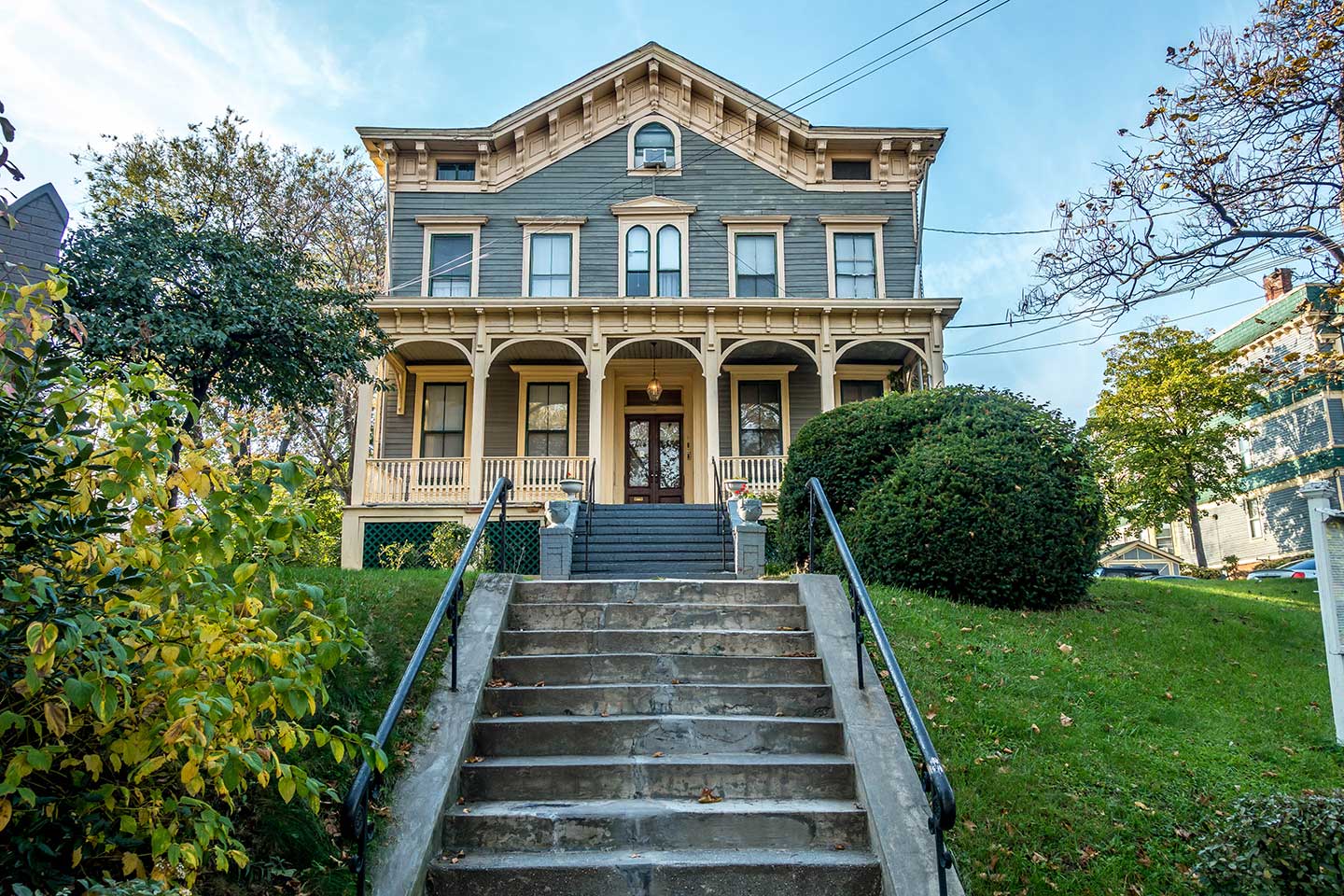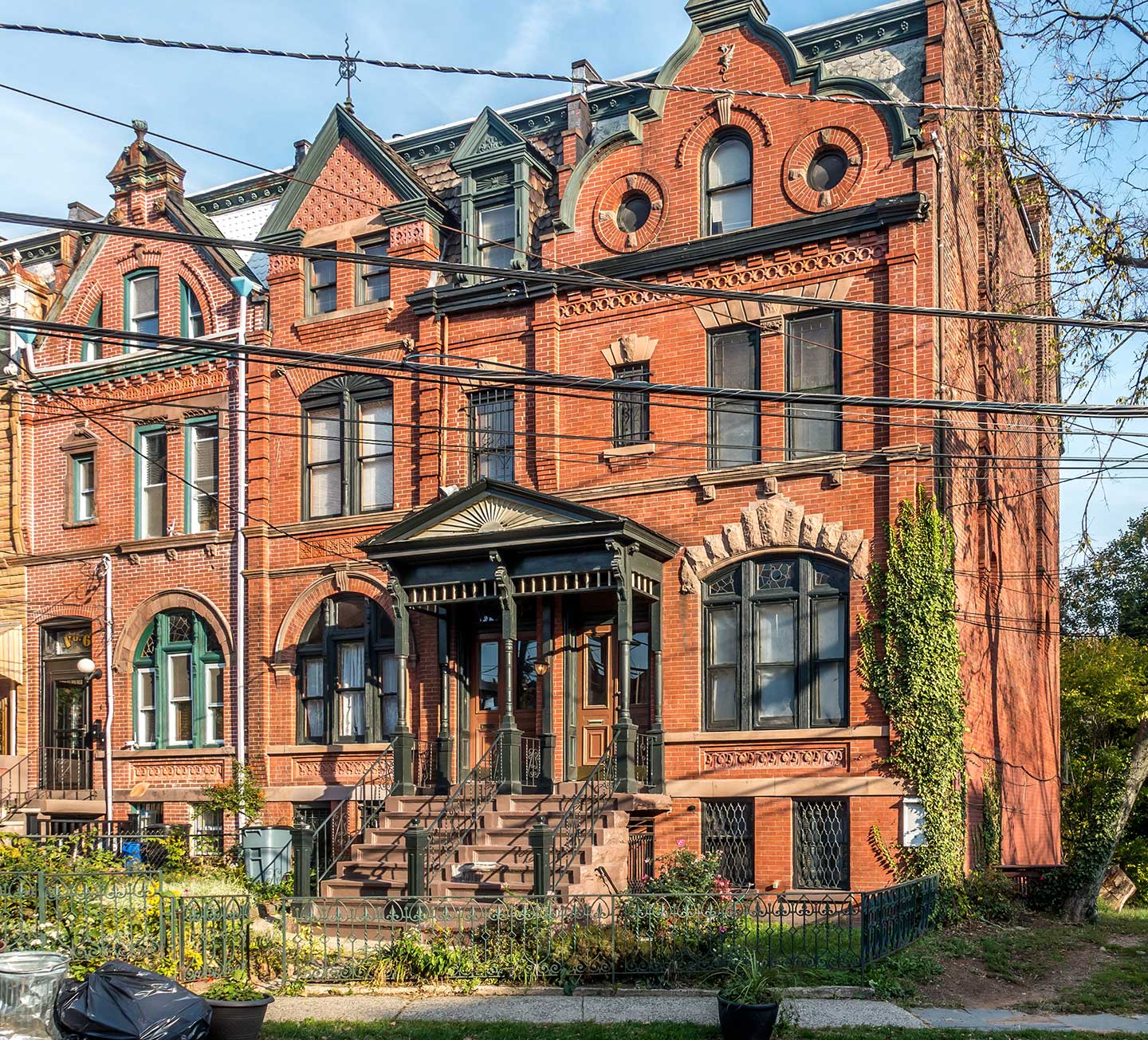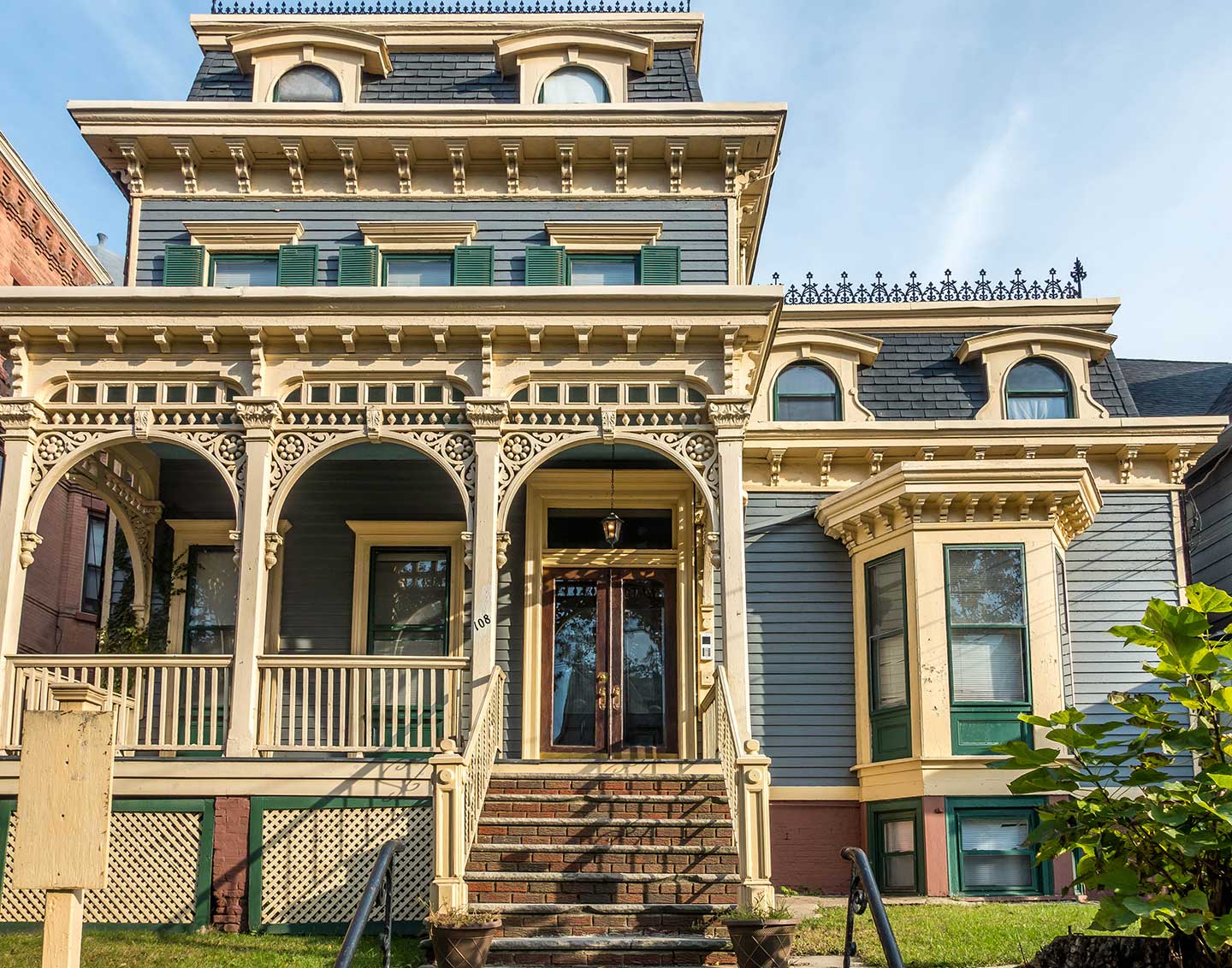This is part one of a special series in collaboration with Jersey City Landmarks Conservancy highlighting Jersey City’s most historic and storied properties.
Bergen Hill, in its heyday, was considered “the suburbs” by people who left Downtown, Jersey City for suburban mansions. The Summit Avenue section of Bergen Hill is one of the oldest roads in New Jersey. Both sides of Summit Avenue remained pasture land until 1855. Within 20 years, however, many mansions would span across the avenue. It was considered the country, “bucolic, pastoral, charming,” according to JCLC historian Dennis Doran. Today, in the ongoing preservation conversation, we feature three JCLC Historic Homes still standing on Summit Avenue.
WAKEMAN HOUSE

41 SUMMIT AVE
Edgar Banks Wakeman, a heavy real estate investor, alderman and attorney, served as City Clerk in 1848. Around the time of the Civil War, Wakeman moved from Downtown to build this fine Italianate style home in Bergen Hill. His backyard lawn sloped down to Prescott street behind Summit. Wakeman purchased land from original Dutch settlers, laid out streets and built and sold a number of houses. Enlarged on two occasions, the home was a private residence into the 1920’s, and subsequently was divided into six apartments with one a huge attic unit. It is located across from the former library (now residential) and church (a powerhouse center of progressive thinking in the 19th Century). The home was restored in 2000.
Built: 1860
Style: Italianate Mansion
Notable:
- First house built on the West Side of Summit Avenue.
- Wakeman owned the entire block.
- Brick, three stories, five bays
- Original ceramic cutout can be seen in the vestibule of the entrance.
- The building features floor to ceiling doors.
- Earlier wooden porch with elaborate brackets has been replaced
—
VAN HORNE HOUSE

62 SUMMIT AVE
In the late 19th Century, Garret Van Horne, a member of one of the old Dutch colonial families of Jersey City, lived in a large frame house at 70 Summit Avenue. In 1889 he divided his property and built four brick row houses at 62-68 Summit Ave in a Dutch old Amsterdam style. The architectural grouping is unique in Jersey City and reflects the Van Horne’s Dutch heritage and their attachment to it. From the mid-19th century, a series of wood frame houses were built on the east side of the avenue where wealthy people in business enjoyed the views over Downtown and the rising NYC skyline. By the 1920s many had been demolished for apartment houses. The Van Horne House currently has 4 apartment units.
Built: 1889
Style: Dutch Queen Anne row house
Notable:
- Brick, three stories, 2 bays
- Elaborate Baroque Gable with two bulls-eye windows
- Painted brickwork with terra-cotta panels
- Keystone frost-floor arched window replaced by brick, third-floor stringcourse stuccoed over.
- Featured in NY Times article “Moving to Jersey City?” as historical site
—
FIELDER FAMILY HOME

108 SUMMIT AVE
Fielder House was home to George Bragg Fielder, who was born in Jersey City and served as a U.S. Congressman from 1893-1895. Fielder served in the army during the Civil War and then as a Sargent Major and Second Lieutenant. His son, James F. Fielder, became the 35th Governor of New Jersey, serving from 1913-1917.
Built: 1870
Style: Second Empire Mansard (French)
Notable:
- Features original tiling in vestibule from 1880s
- Original iron cresting on top of the mansard roof
- Frame, three stories, five bays
- Use of asphalt shingles to cover house despite Second Empire style
- Wood porch with cornices has not been altered
- Joe Harkins lived in one of the 5 apartment units there


